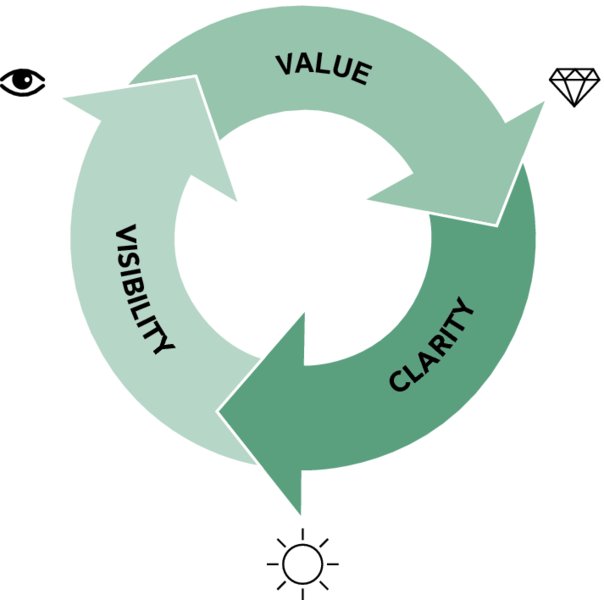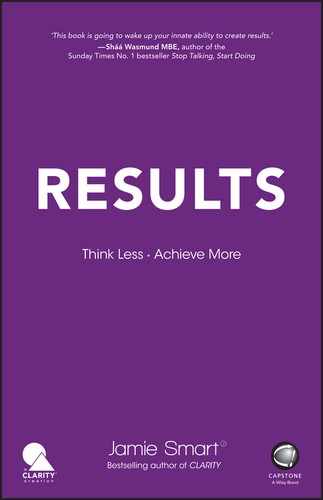19
The Only Things Anyone Ever Pays For
One man's meat is another man's poison.
Ancient proverb
‘A True Fan is defined as someone who will purchase anything and everything you produce…’
In his now-legendary 2008 blog-post ‘1000 True Fans’, author Kevin Kelly (founding executive editor of Wired magazine) made the case that creators (e.g. musicians, photographers, designers, authors) could make a decent living with a community of just 1000 True Fans. He defined a True Fan as ‘someone who will purchase anything and everything’ you produce, and explained that if these fans each spent $100 per year, it would generate a $100,000 income. Many in the creative community embraced this message, and used the internet's unprecedented potential for connectivity to build large, devoted followings. And while his message spoke to the challenges faced by artists, there are valuable lessons in it for us all. By the time Kelly's article was published, I'd already spent five years building a tribe of 80,000 people who read my articles, watched my videos and hired me to work with them. As Kelly predicted, a smaller percentage of these were True Fans, purchasing virtually everything I produced. And it turns out that I was not unique. All over the world, people are creating value and getting rewarded for it. There's a universal ‘value formula’ that's used by everyone, whether they realize it or not. It's used by companies who want to address new audiences and by church leaders who want to grow their congregations. Teachers use it to engage their students and teenagers use it to enlarge their social circles. It's employed by terrorist groups to attract recruits and by governments looking to change their citizens' behaviour. The CLARITY® Value Formula has three elements: visibility, value and clarity.

Figure 19.1: The CLARITY® Value Formula
1. Clarity
Clarity of understanding allows you to see through contaminated thinking and move boldly forward to make a difference. Each of us is unique, with our own talents, abilities and perspectives on life. Your uniqueness is an expression of your inner self; the ‘true self’ we referred to in Chapter 4. This is the source of your authenticity, resilience and common sense. The more aligned you are with your true self, the more impactfully you can create value for others. The only thing that ever stops someone being aligned with their true self is contaminated thinking. But as your grounding in the principles behind clarity continues increasing, you'll find yourself acting from that place of security and certainty more frequently and reliably.
2. Visibility
Value is exchanged in the context of relationships. It's difficult for people to find your products or services if they don't know you or your company exist. It's difficult to create value for people if you don't know they exist. If you want to create value for people, you need to become visible enough to each other for a relationship to be initiated. You don't need to be visible to everyone, but you need to become visible to the people you want to serve. This may mean giving some thought to who you want to serve, and how you can become visible to each other.
3. Value
People don't pay for what you value; they pay for what they value. Whether they're paying with money, attention, time or energy; the more highly they value a result, the more they're willing to pay. So what's the value you want to create, and how does it deliver the result your audience is looking for? Understanding how your audience sees reality (i.e. their world view) allows you to create the value that meets their specific wants and needs; the things, experiences and results that matter to them.
Separate realities revisited
Remember: we each live in our own THOUGHT-generated perceptual reality. As you get clarity about who you want to become visible to, it can be profoundly useful to find out more about how they see the world. This can help you get clarity about three important things:
- What they perceive as value.
- How you can provide that value, or something they'll value even more highly.
- How you can connect with, engage and educate them to the point where they're able to make an informed decision about what you're offering.
The better you understand your audience's world view, the more easily you can connect with them, and the more eloquently you can communicate with and educate them. Here are some questions that may help you start to ‘get’ their world view:
- Who do you want to connect with?
- Where do they spend their time?
- What's the result they want?
- Why do they want that result? Why does it matter to them?
- When do they want that result?
- What are their struggles and challenges?
- What are their hopes, dreams and aspirations?
- What are they passionate about?
- What are they afraid of?
- What's important to them? What matters?
- What do they believe? What looks true to them?
- What are they already on the lookout for?
- What's the conversation they're already having with themselves?
- How can you meet them in their reality, and become visible to them?
- How can you inspire them to make themselves visible to you?
Of course, when you take on bigger opportunities and challenges, it sometimes shines a light on areas where you're not seeing the inside-out nature of life, and it's time for another increase in your grounding. The CLARITY® Value Formula is a virtuous circle. As you grow in any one of the three areas, you're inspired to grow in the others.
So once you know what journey you want to take people on, how do you influence people to come on the journey with you?
